The devastating floods and landslides sweeping through Pakistan this monsoon season have once again laid bare the country’s vulnerability to climate change and institutional unpreparedness. In just the past day, more than 400 lives have been lost across Buner, Swat, Shangla, Bajaur, Gilgit-Baltistan, and parts of Azad Kashmir. Dozens of homes have been washed away, funeral prayers have filled muddy fields, and the sound of grief has echoed across valleys that have once again become symbols of human fragility in the face of nature’s unleashed fury.
Why has Pakistan become a place where each monsoon now feels like a disaster waiting to happen? The answer lies partly in geography and climate, but largely in policy, planning, and above all, governance failures. Pakistan sits in one of the most climate-vulnerable regions of the world, perched on the edge of the Himalayas, where torrential monsoon rains between June and September account for nearly three-quarters of the annual precipitation. But what was once a seasonal cycle of replenishment for crops and rivers has turned into a yearly calamity. Scientists warn that climate change has intensified the monsoon, making rains heavier, storms more unpredictable, and flooding more frequent. Warmer air holds more moisture, releasing it in sudden downpours (cloud bursts) that overwhelm rivers and drainage systems. The glaciers of the north, melting faster than ever before, feed torrents into already swollen channels. Pakistan contributes less than one percent to global greenhouse gas emissions, yet ranks among the top ten countries most affected by climate disasters.
But climate alone does not explain the depth of destruction. Floods in themselves are not inherently catastrophic, it is their collision with human settlements, fragile infrastructure, and deliberate neglect by successive governments that turns natural hazards into human tragedies. In Khyber Pakhtunkhwa, which has suffered the highest casualties, the provincial government has had 11 years of rule but nothing to show except slogans and hollow claims.
The much-trumpeted Billion Tree Tsunami project, hailed as a flagship environmental reform, has now been widely exposed as a massive fraud, with trees that were never planted, lands misused, billions siphoned away, while the hills of Swat and Dir were left barren. The Malam Jabba land scandal is another example of how natural resources were treated not as assets to be protected but as opportunities for corruption.
At the same time, unchecked tree cutting and deforestation across KP weakened the natural shield that forests provide against landslides and floods. Had governance been serious, had forests been preserved and watersheds restored, had infrastructure been built and maintained, thousands of lives could have been saved. Instead, more people have died not because of the fury of the floods alone but because of sheer negligence, mismanagement, and the absence of checks and balances in the system.
The question ‘why’ is answered by both climate change and failure of governance. The question ‘till when’ is answered by our collective willingness to act. And the question ‘what to do’ is answered by choices that Pakistan must make now, backed by support it must demand from the world. If not, the next monsoon will again bring not renewal but ruin, and the cycle of loss will deepen until it becomes unbearable.
In Bajaur, crowds gathered around an excavator scraping through a mud-soaked hillside to retrieve bodies, while in nearby villages, people prayed over corpses wrapped in blankets. Their grief is not just for the dead but for a system that consistently fails to protect the living. Houses in flood-prone valleys are often poorly constructed, roads are washed away with each season, and early warning systems remain patchy and underfunded.
How long can this continue? The brutal truth is that unless decisive action is taken, Pakistan will face such devastation every monsoon for the foreseeable future. Climate projections indicate that South Asia will experience more erratic rainfall, more intense flooding, and more frequent landslides in the decades ahead. By mid-century, glaciers feeding the Indus River system, the lifeline for agriculture and drinking water, may recede so drastically that both floods and droughts will intensify. The cycle is cruel: too much water in one season, too little in another. Pakistan’s population, expected to surpass 300 million in years to come, will strain already fragile resources. Urban centres will swell with climate migrants fleeing inundated villages, while the countryside will endure repeated shocks to food production. Without structural change, the question is not whether lives will be lost each year, but how many.
So what can Pakistan do to break this deadly cycle? The answers are neither simple nor short-term, but they are essential. The state must treat climate resilience as a national security priority, on par with defence and economic stability. That means building infrastructure that can withstand extreme weather: embankments along rivers, stronger housing, reservoirs to store excess rainfall, and proper drainage in cities. The helicopter crash in Bajaur is a stark reminder that even relief efforts are vulnerable; investment in equipment, training, and coordination is critical.
Pakistan must also shift from reactive disaster management to prevention. Early warning systems, satellite data, and community networks can save lives if paired with well-equipped shelters and public awareness campaigns. Equally vital is rethinking the country’s relationship with land and water. Rampant deforestation has destabilized slopes, while unplanned construction in riverbeds magnifies destruction. Reforestation, watershed protection, and stricter land-use planning are survival imperatives. But Pakistan cannot face climate disasters alone. The world’s biggest polluters must be held accountable through climate financing, technology transfer, and operationalizing the loss and damage fund. Above all, Pakistan needs political will: long-term resilience beyond slogans, education that embeds climate awareness, and a mobilized youth demanding accountability.
The images from KP, GB and Kashmir this week, muddy fields turned into cemeteries, helicopters crashing in storms, families weeping beside the bodies of their loved ones are painful reminders that time is running out. Each year of inaction compounds the risks of the next. Pakistan cannot afford to treat floods as acts of fate; they are the predictable outcome of climate stress colliding with corruption and neglect.
The question ‘why’ is answered by both climate change and failure of governance. The question ‘till when’ is answered by our collective willingness to act. And the question ‘what to do’ is answered by choices that Pakistan must make now, backed by support it must demand from the world. If not, the next monsoon will again bring not renewal but ruin, and the cycle of loss will deepen until it becomes unbearable.






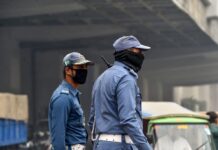

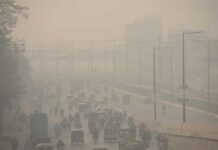

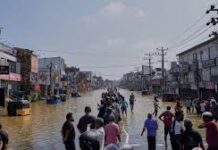


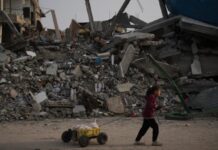





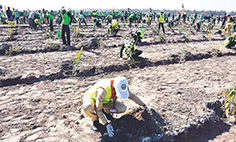




Fantastic beat I would like to apprentice while you amend your web site how could i subscribe for a blog site The account helped me a acceptable deal I had been a little bit acquainted of this your broadcast offered bright clear concept
Your blog has quickly become one of my favorites. Your writing is both insightful and thought-provoking, and I always come away from your posts feeling inspired. Keep up the phenomenal work!
Luxury cleaning perfection, perfect for our high-end finishes. Recommending to luxury properties. Premium service premium results.